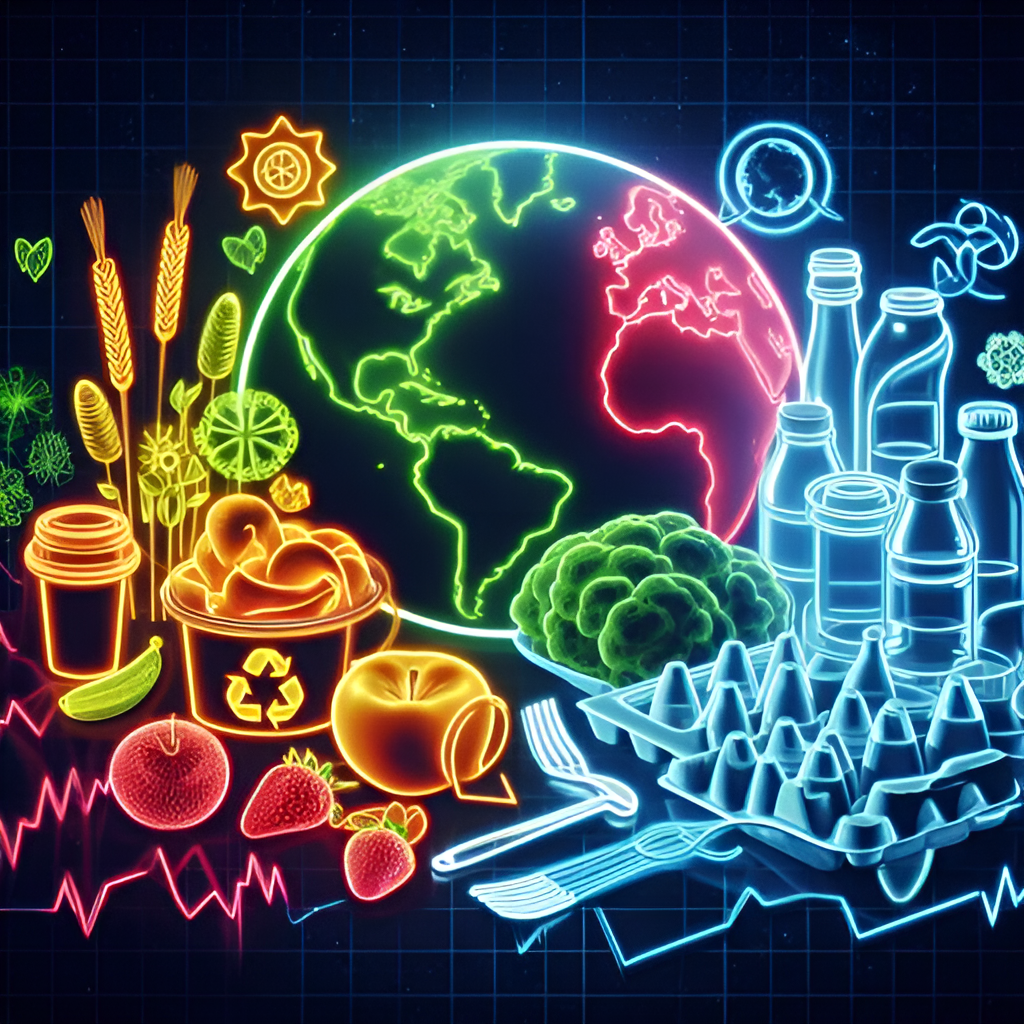Climate change is a pressing reality that is increasingly affecting our planet. Rising global temperatures, changing rainfall patterns, and extreme weather events have severe ramifications, extending far beyond the scope of the environment. One of the critical areas impacted by climate change is our food supply. In recent years, numerous scientific studies have highlighted the alarming disappearance of certain foods due to the changing climate
Here, we will explore 7 currently threatened foods and examine the evidence behind their disappearance.

“Earth in the grip of climate change, images of food illustrate the profound impact of global warming on our agricultural treasures, urging action for a sustainable future.”
Image credits: Microsoft designer
7 Foods That Might Extinct Due To Climate Change
Climate change is resulting in unexpected increases in atmospheric temperature. Such temperature fluctuations have impacted agriculture and the availability of many in-demand foods, which are in danger of going extinct shortly. Let’s talk about some of them below:
-
Coffee
The popular morning ritual of drinking coffee is in danger. Given coffee plants’ susceptibility to environmental changes, climate change threatens this industry. According to a prominent study titled “The Impact of Climate Change on Global Coffee Production” (Climatic Change, 2015), by 2050, the ideal coffee-growing regions will significantly decrease, resulting in reduced coffee production.
-
Chocolate
The cacao tree needs specific temperatures, humidity levels, and rainfall patterns because it is susceptible to climatic conditions. Variations in these variables may affect the yield and growth of cacao plants, thus affecting the production of chocolate.
As per the journal Climatic Change in 2011, by 2050, the amount of land suitable for cacao cultivation will decrease due to changes in precipitation patterns and rising temperatures.
The National Oceanic and Atmospheric Administration (NOAA) states that researchers believe cacao trees may become extinct by 2050.
-
Avocado
Millennials’ beloved green fruit, avocados, may become a rare luxury item due to climate change. According to a United Nations Food and Agriculture Organisation study, temperature and precipitation variations negatively affect avocado production.
-
Wine Grapes
Temperature changes, patterns of precipitation, and general growing conditions are some ways climate change affects wine production. Wine production is changing due to climate change, affecting every process step, from the wine to the bottle. As the climate grows less hospitable, grape development and harvesting will be affected, leading to variations in wine composition and taste.
-
Bananas
Climate-related problems are posing a threat to the fruit, banana, which is the most popular fruit in the world. The International Institute for Sustainable Development (IISD) research clarifies that diseases like Panama disease, which is more prevalent in warmer and wetter climates, can severely harm banana crops. The IISD cautions that the global banana industry may suffer significant losses without strong adaptation measures, affecting both farmers and consumers.
-
Seafood
The world’s oceans are greatly affected by climate change, and so are the marine ecosystems and seafood production. The American Meteorological Society published a study in 2019 that highlights the persistent warming of the world’s oceans. The abundance and accessibility of different seafood can be impacted by changes in marine species’ migration and distribution patterns brought about by warmer waters, rising ocean temperatures, and increased absorption of carbon dioxide.
-
Maple Syrup
A report from the United States Department of Agriculture (USDA) details how climate change affects the maple syrup industry. The delicate balance of freezing and thawing needed for sap flow is upset by warming temperatures, endangering the livelihoods of workers. The iconic maple syrup tradition may decline in the upcoming decades if effective climate mitigation is not implemented.
Conclusion
Our global food landscape is changing due to the changes in environmental conditions necessary for agriculture. These seven foods might face extinction, which is a sober reminder of the effect of climate change on our daily lives and eating habits. Immediate actionable efforts are demanded to reduce these effects, such as modifying agricultural practices and creating sustainable solutions to guarantee a future in which these foods continue to be a part of our tables and traditions.
If you enjoyed reading our articles, please support us by buying our geeky merchandise on Instagram. Alternatively, you could buy us a coffee or follow us on Facebook, Twitter, Pinterest, or Medium.


